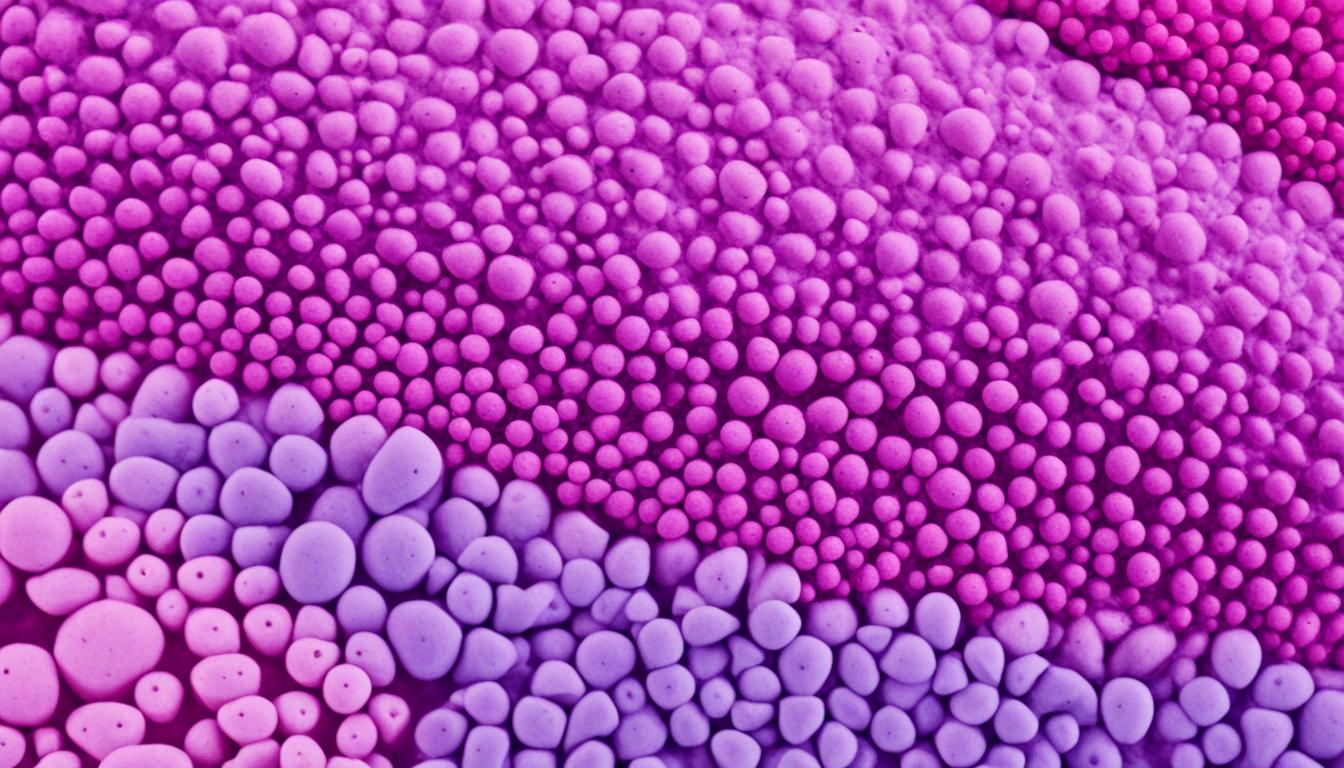Uterine fibroids are non-cancerous lumps in the uterus. They vary in size and can distort the uterus. This distortion may make someone look like they’re pregnant.
Fibroids might not show symptoms in some people. Others may have heavy periods, pelvic pain, or feel pressure. Hormonal imbalances, genetics, and growth factors might cause these fibroids.
People at higher risk include those of reproductive age and Black individuals. Also, a family history of fibroids, early periods, obesity, low vitamin D, and a poor diet increase risk.
Treatments for fibroids vary based on size and symptoms. Options include medications, birth control, and pain relievers. Surgical procedures like myomectomy or hysterectomy might be needed in severe cases.
Stem cell therapy is a new, less invasive treatment. It uses the body’s own stem cells to shrink fibroids. This approach can help with symptoms and protect fertility.
Key Takeaways:
- Uterine fibroids are non-cancerous growths that occur in the uterus.
- Common symptoms of fibroids include heavy menstrual bleeding, pelvic pain, and pressure.
- Risk factors for fibroids include reproductive age, Black ethnicity, family history, and certain lifestyle factors.
- Treatment options for fibroids include medications, surgery, and emerging therapies like stem cell therapy.
- Stem cell therapy offers a less invasive alternative to surgery for shrinking and managing fibroids.
Symptoms, Diagnosis, and Causes of Uterine Fibroids
Uterine fibroids come with a range of symptoms. These can change based on fibroid size, location, and number. Here are some often seen symptoms:
- Heavy menstrual bleeding or painful periods
- Longer or more frequent periods
- Pelvic pressure or pain
- Frequent urination or difficulty urinating
- A growing stomach area
- Constipation
- Pain in the stomach area or lower back
- Pain during sex
But, some fibroids might show no symptoms. They often appear by chance during a check-up or ultrasound.
To diagnose uterine fibroids, a doctor will do a physical exam. They might also use a pelvic ultrasound. More tests like MRI or hysteroscopy could be needed. The ultrasound gives images of the uterus, showing the fibroids’ size and where they are. Additional tests help confirm the diagnosis and rule out other issues.
The true cause of uterine fibroids remains unclear. However, researchers point to several possible factors. These include:
- Hormonal changes: Variations in estrogen and progesterone levels seem to boost fibroid growth.
- Genetic issues: Changes in uterus cell genes might influence fibroid growth.
- Growth factors: Things like insulin-like growth factor could play a part in fibroid development.
- Extracellular matrix (ECM): The ECM is thought to help fibroids grow.
Various things can make developing fibroids more likely. These risk factors are:
- Being of Black ethnicity
- Having family members with fibroids
- Starting your period early
- Being overweight
- Having low vitamin D levels
- Eating too much red meat and not enough fruits and veggies
Understanding fibroids’ symptoms, diagnoses, and causes is key. This knowledge can help people get the right medical care. It can also guide them in finding treatments that fit their needs.
Treatment Options for Uterine Fibroids
Treatment for uterine fibroids varies based on size, location, and if they’re causing symptoms. The desire for future kids also matters. If fibroids are small and symptom-free, just keeping an eye on them might work. Over-the-counter pain meds, iron for anemia, and hormones can help with symptoms.
There are two main surgeries: myomectomy and hysterectomy. The first removes fibroids and keeps the uterus intact. The second removes the entire uterus. Minimally invasive surgery is also an option, like laparoscopic or robotic procedures for removing fibroids.
Newer treatments like uterine fibroid embolization, radiofrequency ablation, and stem cell therapy are becoming more available. These options are less invasive than surgery. They might be good choices for those looking for different treatment methods.
Seeing a fibroid expert or a gynecologist is crucial. They can help choose the right treatment for your situation and wishes. Their advice will be tailored to what’s best for you.

